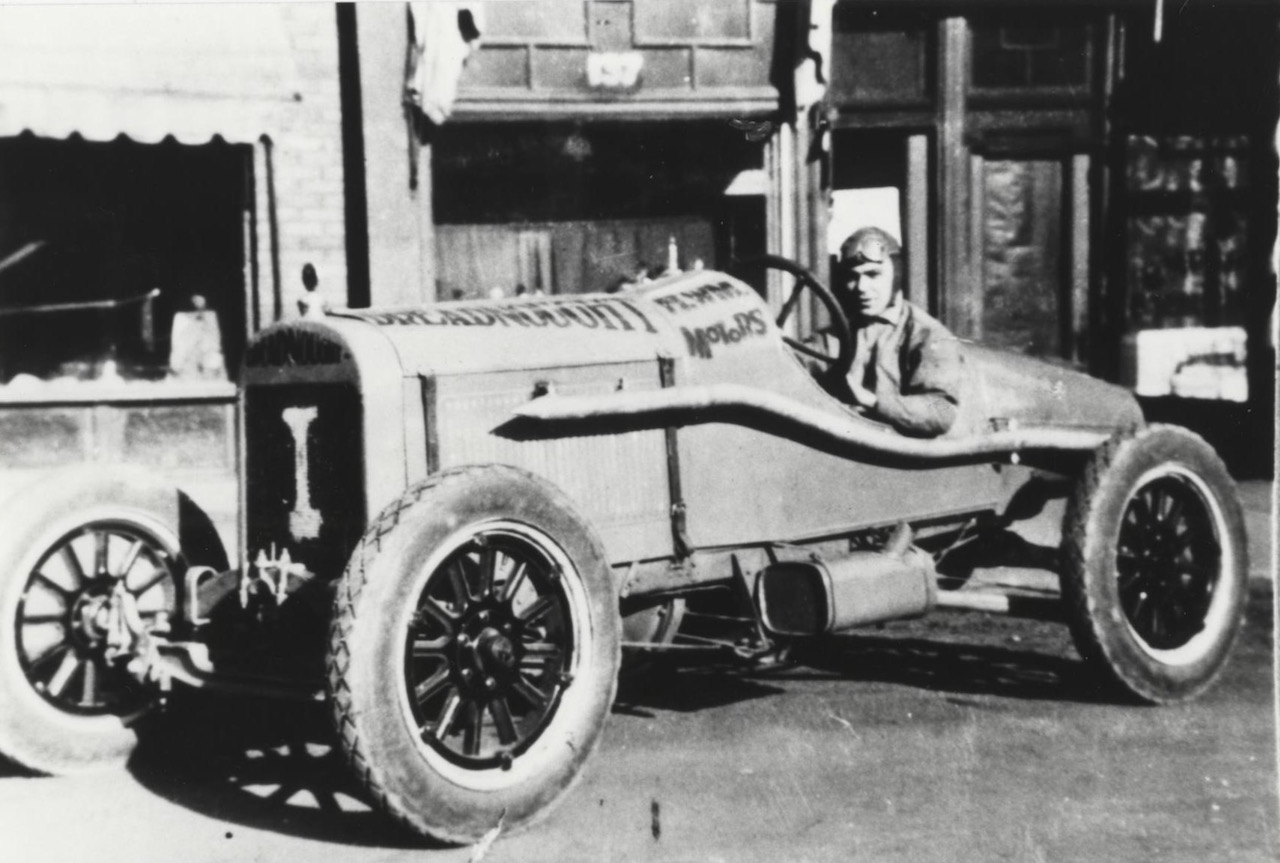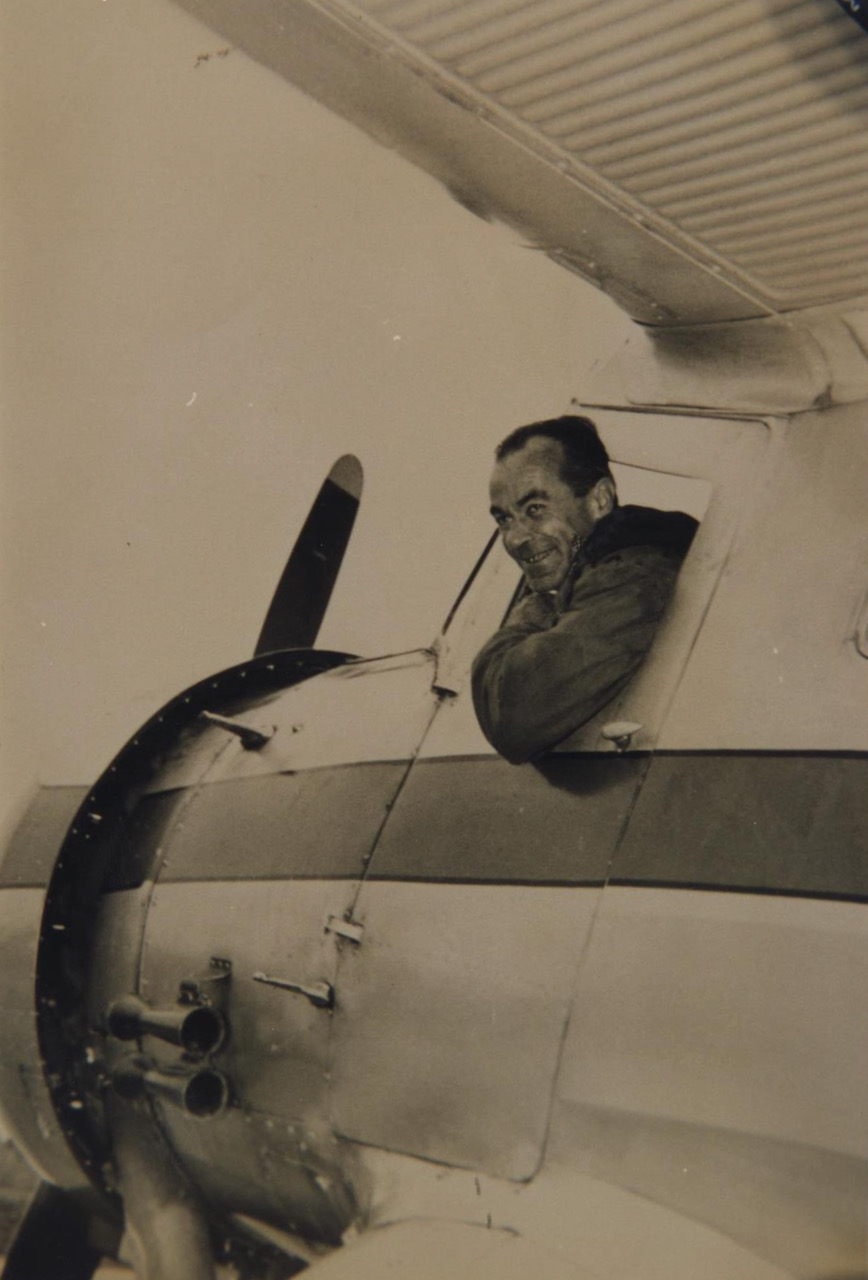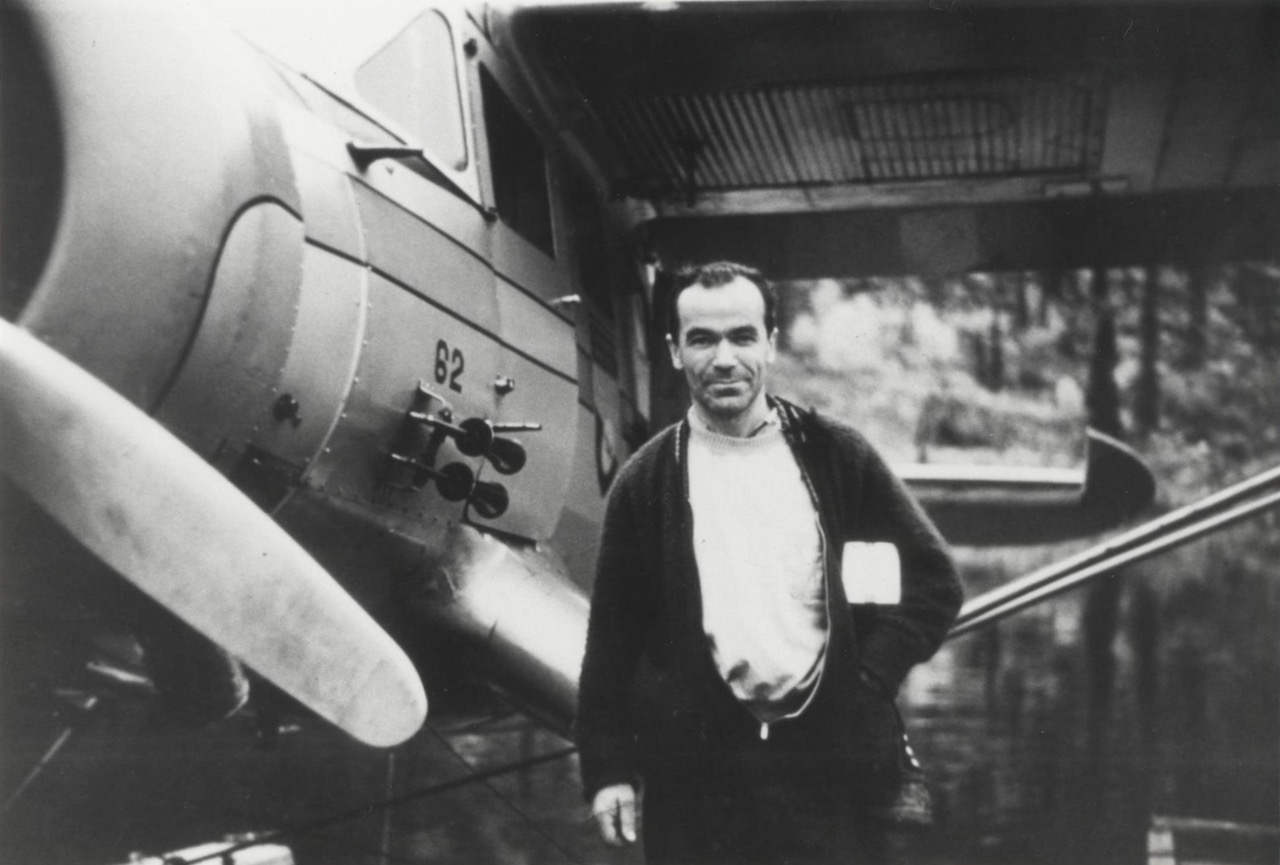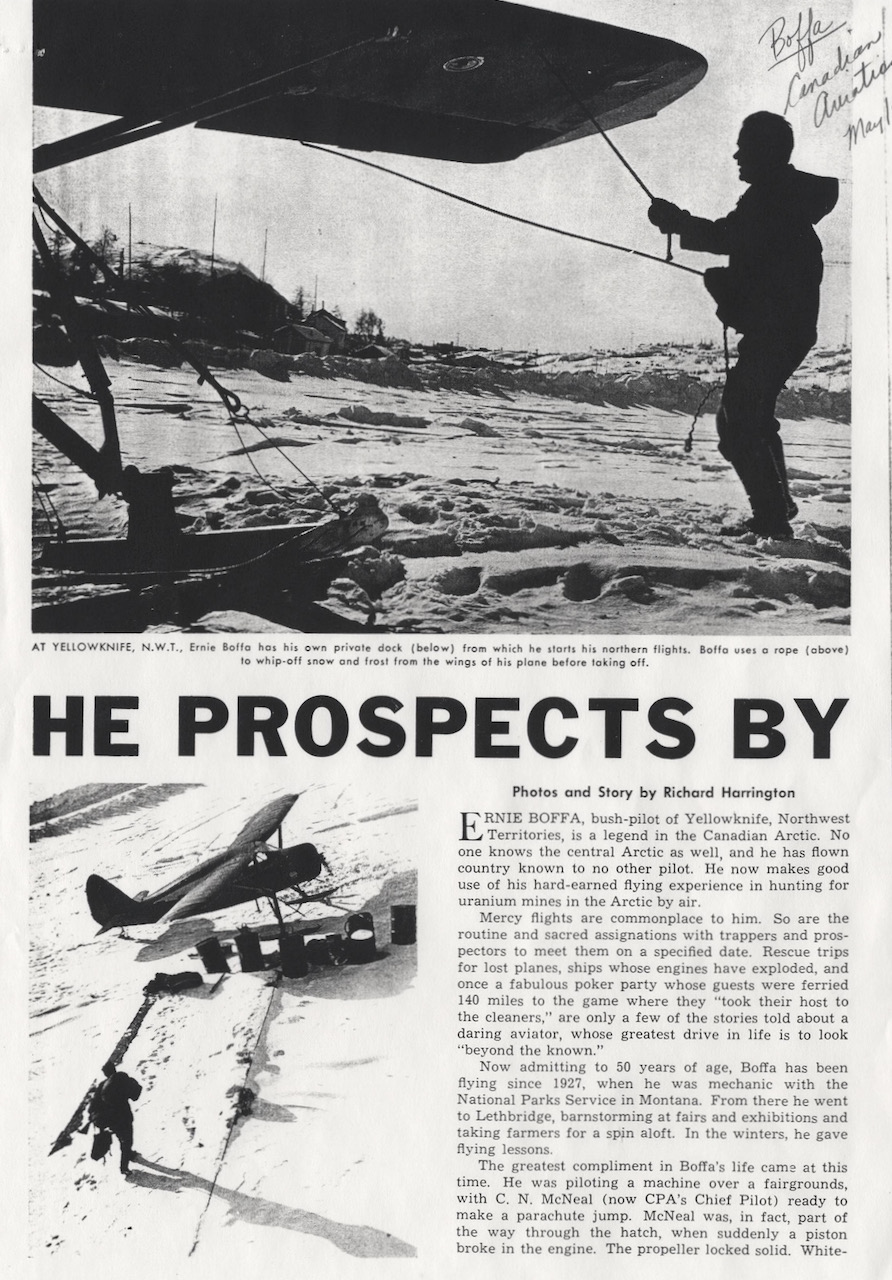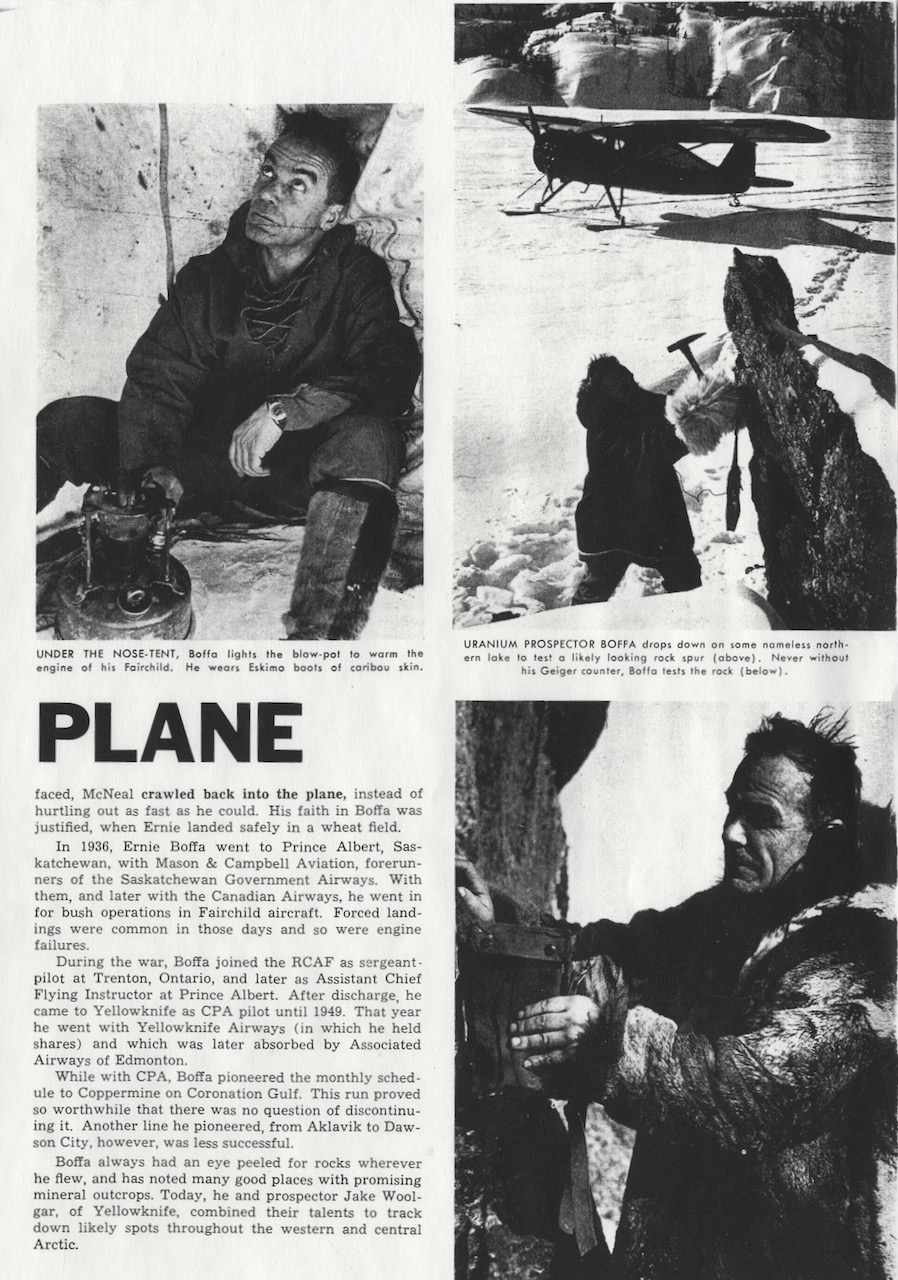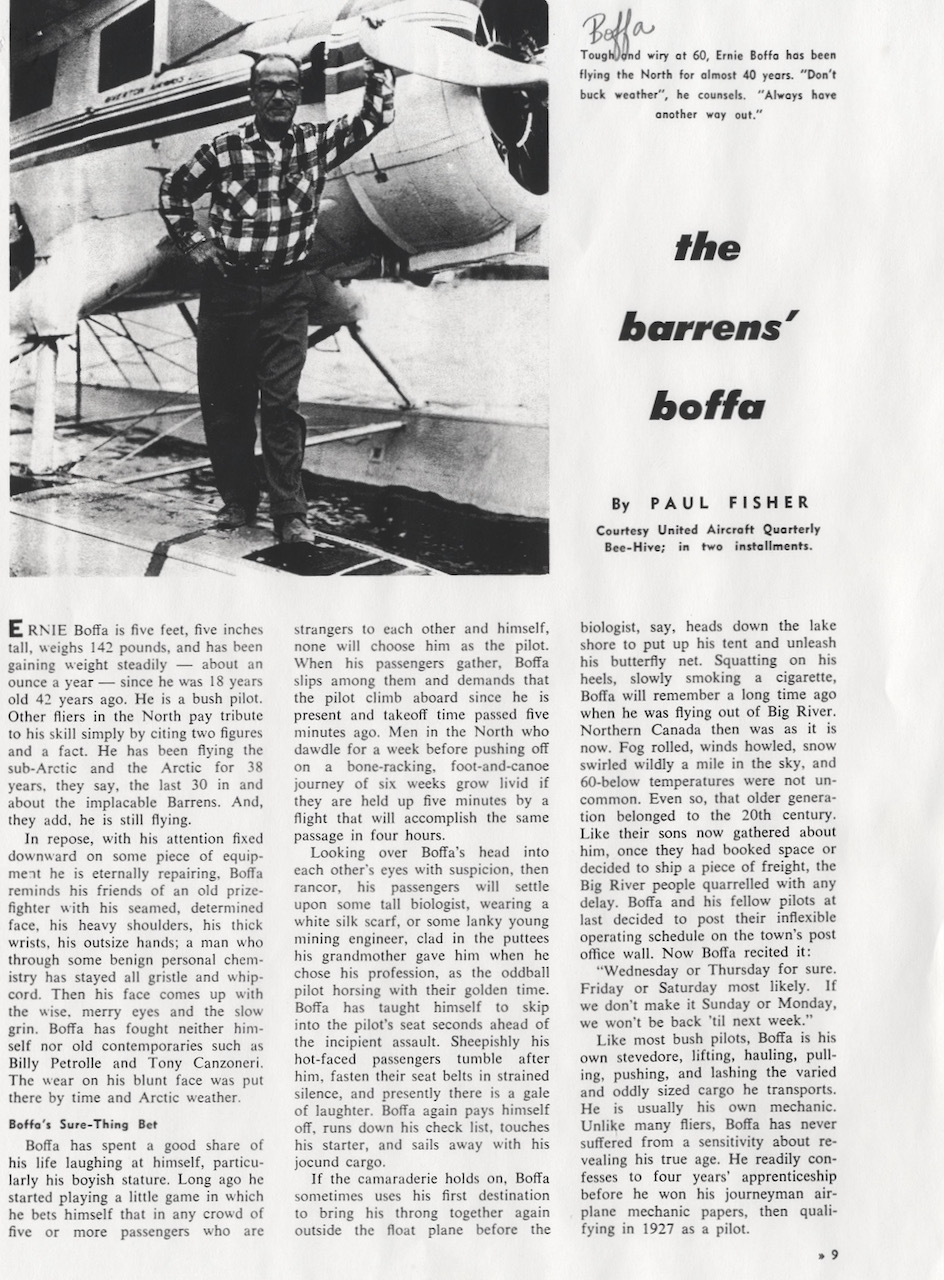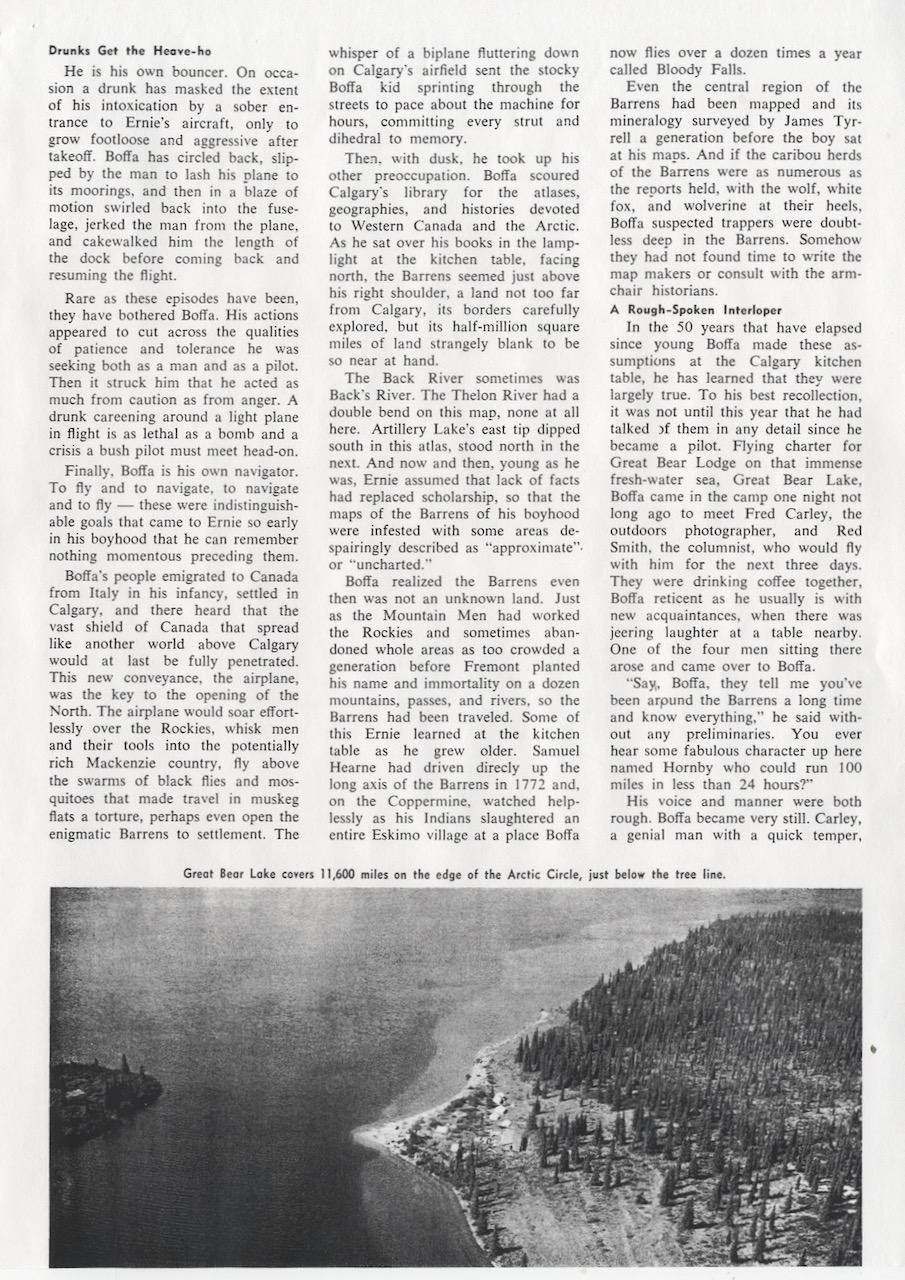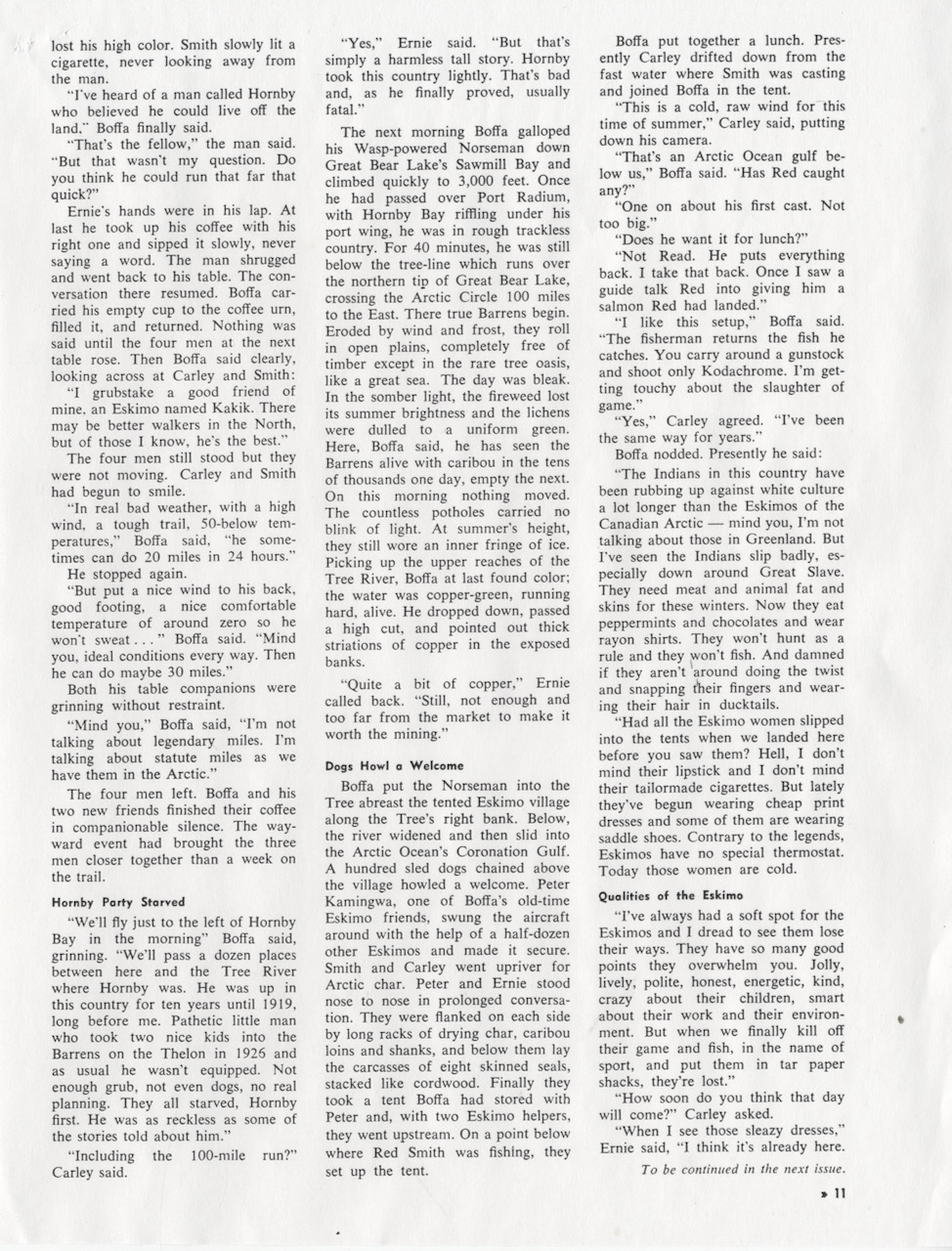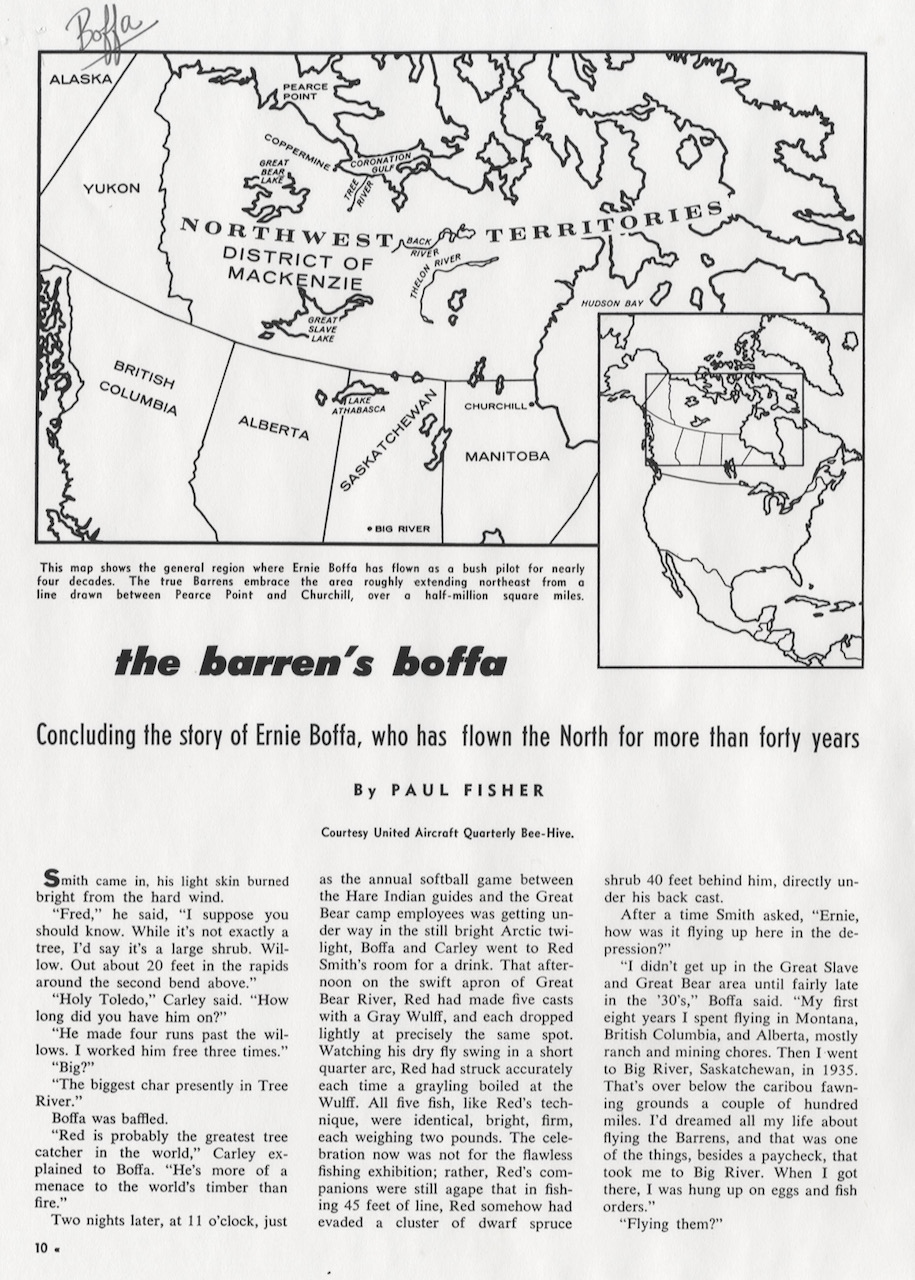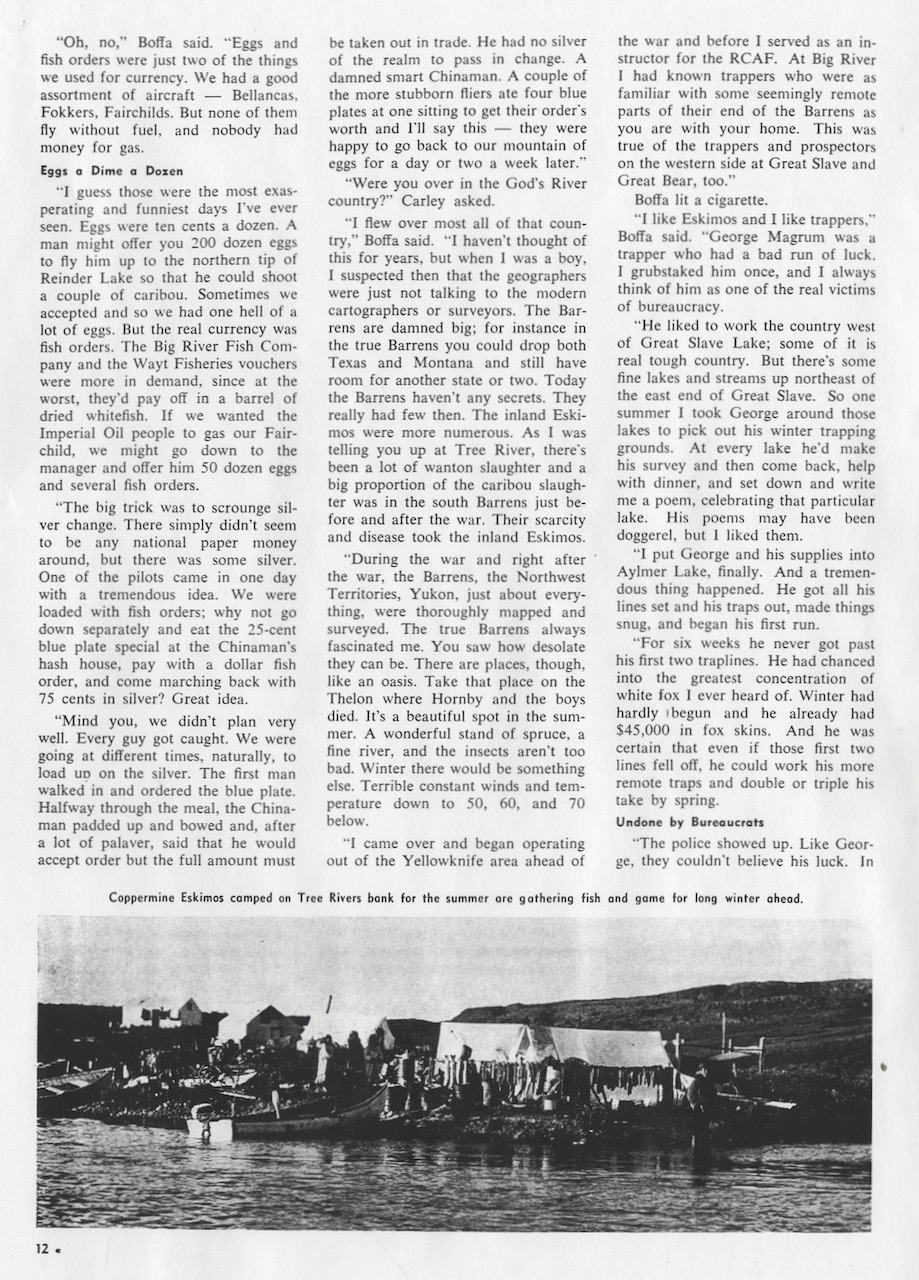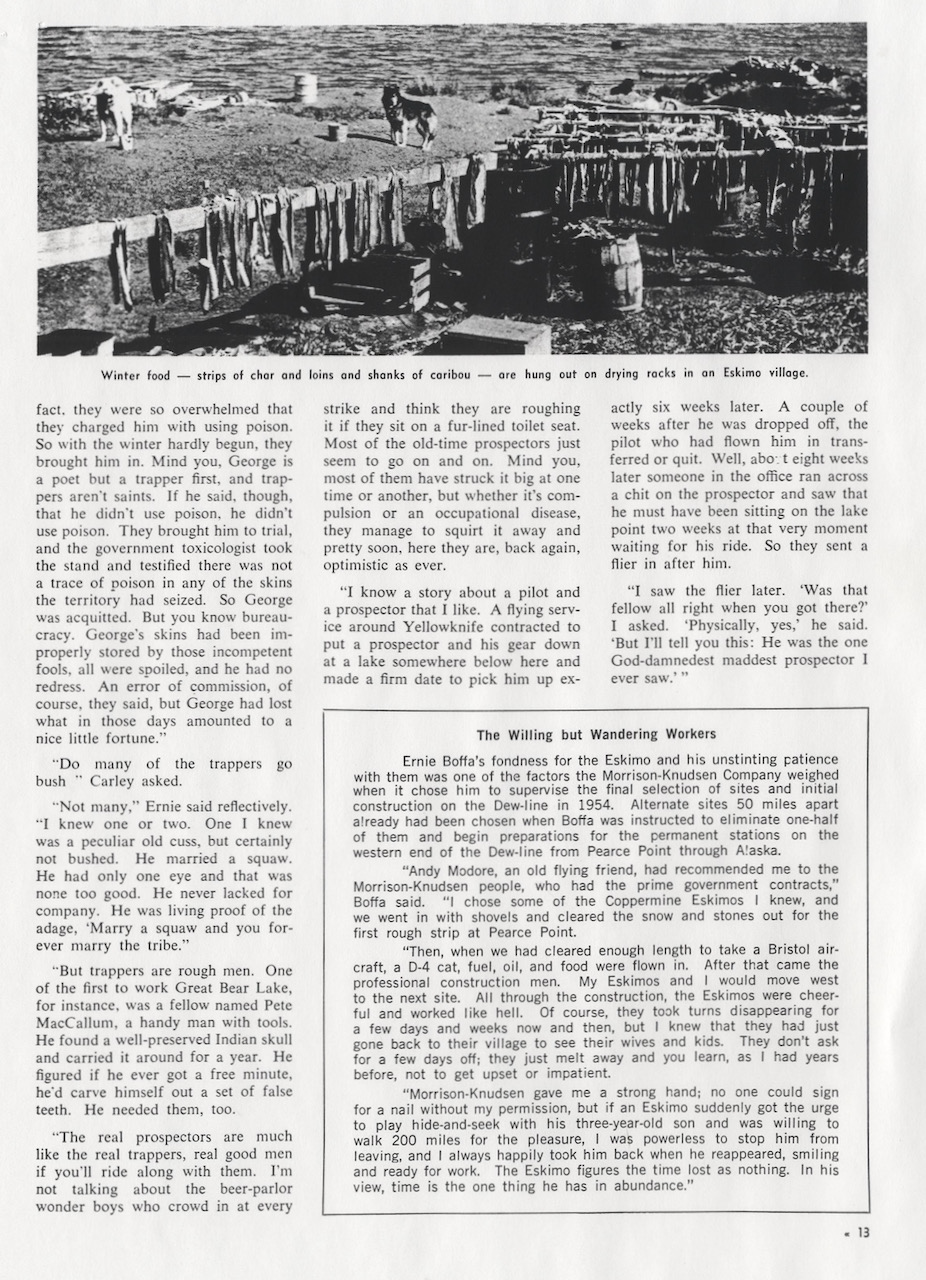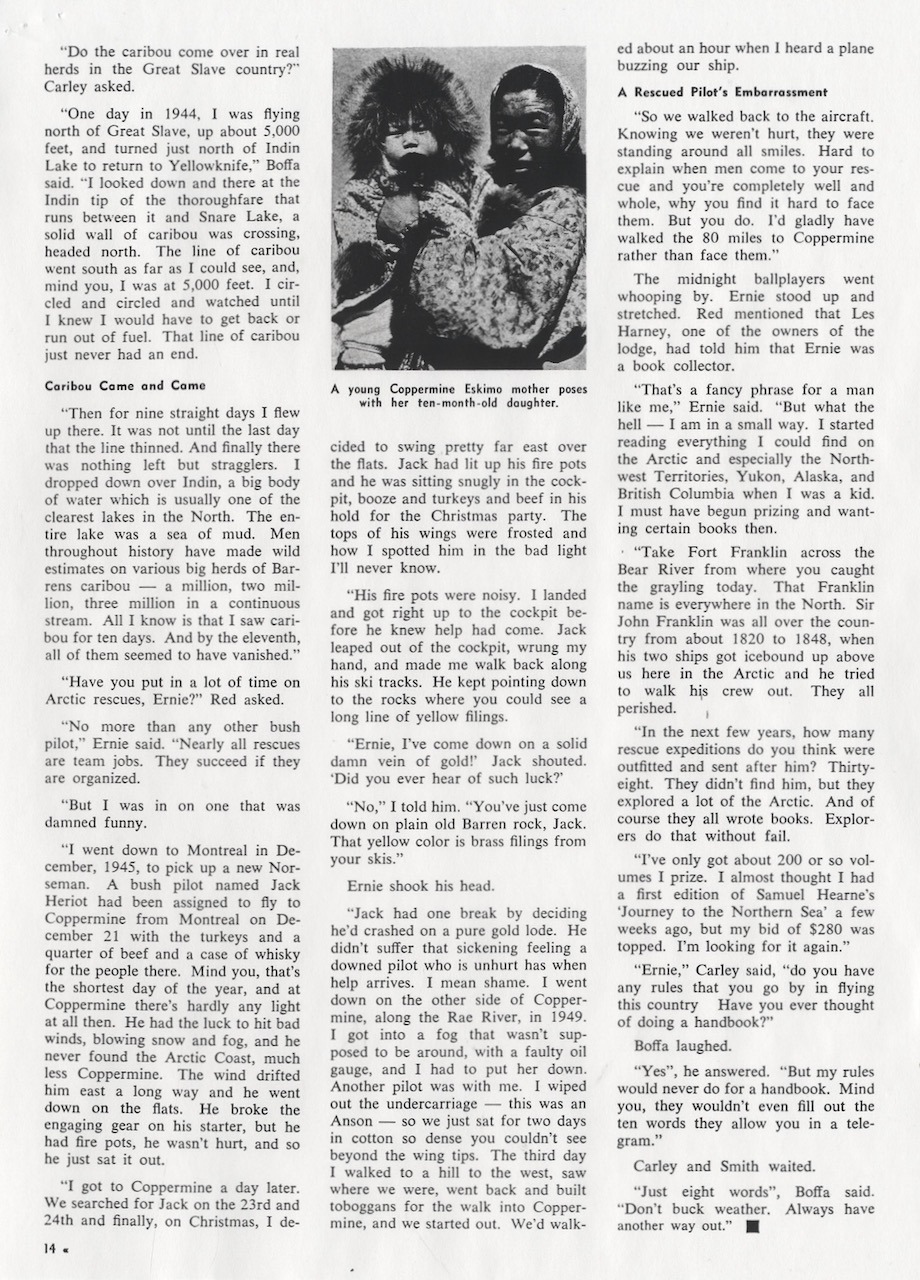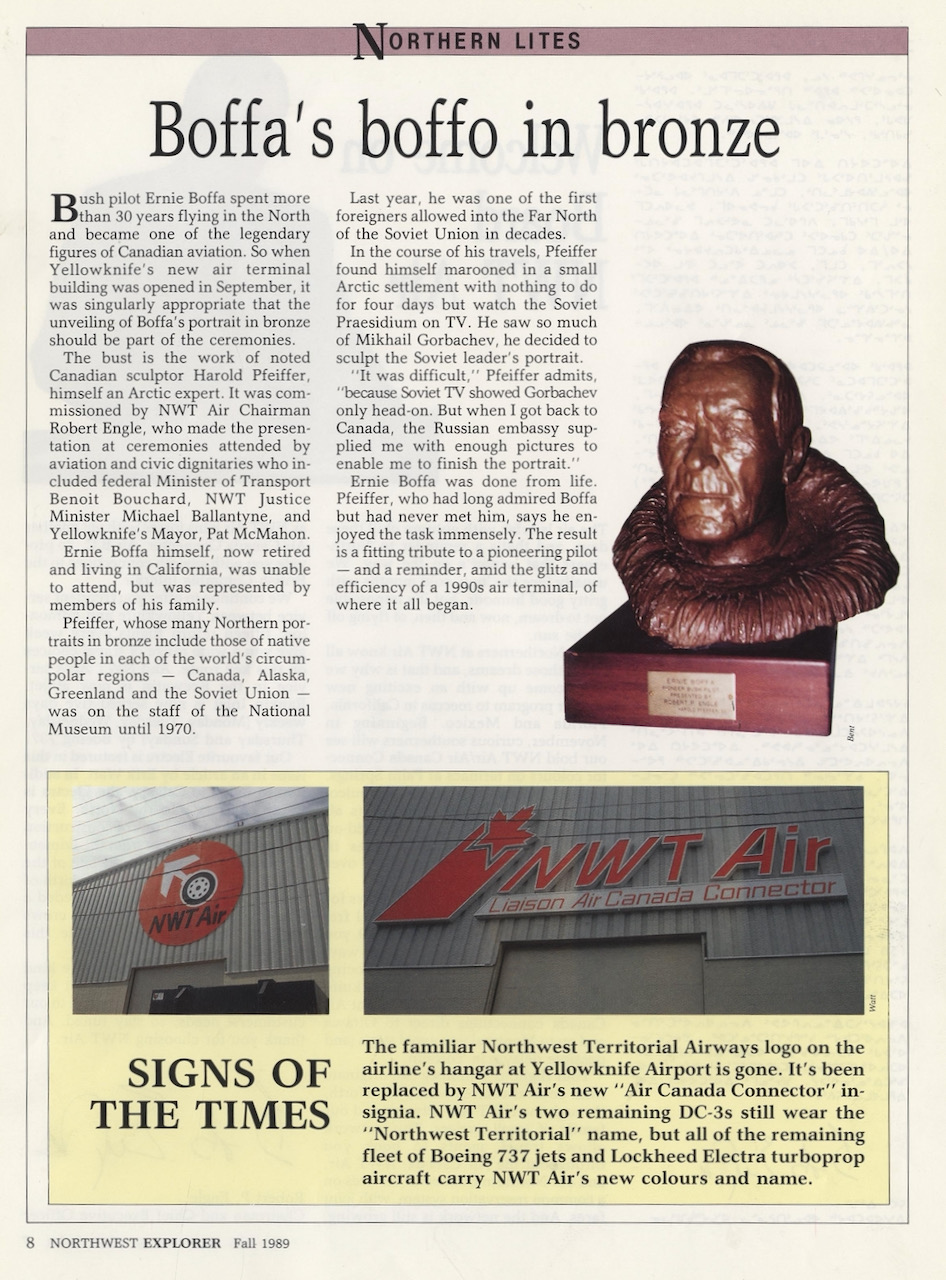Ernest Joseph Boffa
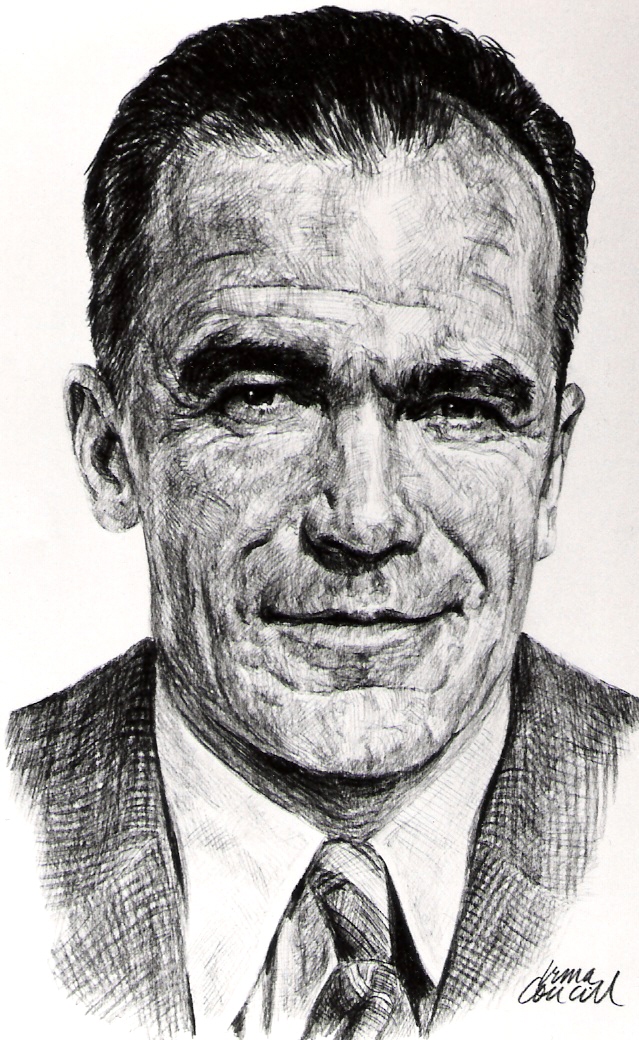
Nickname: Ernie
Birth Date: April 16, 1904
Birth Place: Piedmont, Italy
Death Date: March 8, 2004
Year Inducted: 1993
His superb navigational and engineering skills and competent command of his aircraft during the development of Canada's north have become legendary and have been of lasting benefit to Canadian Aviation
Cars and Planes
Ernest Joseph Boffa was born on April 16, 1904, in Piedmont, Italy and came to Canada with his family in 1907. They lived in Calgary until they moved to Fort William, Ontario, in 1915.
Boffa secured employment at a bicycle shop in 1915, and later, apprenticed with Canadian Car and Foundry in Fort William. During this time, he took correspondence courses in mechanical engineering and two years of drafting at night school. When the company closed, he worked as an auto mechanic and raced cars at local fairs. He built his own car, the Dreadnought, which was quite successful. He won the July 1st car race on the 60th Anniversary of Confederation in 1927 in a car with a Laurel 16 valve engine. The owner could not keep the engine running and offered the car to Boffa for the race. His winning of the race was proof of his mechanical skill.
In 1927 Boffa moved to Great Falls, Montana, USA, where he decided to pursue his dream by taking flying lessons at Vance Air Services. The company had a shortage of instructors so National Parks Airlines pilots would instruct when needed. Consequently, Boffa had six different instructors in the nine hours that he needed to solo. While learning to fly, he worked at an autobody shop where he learned acetylene welding. He also worked in the hangar and was taught to do the wood and fabric work on aircraft by the same man who prepared the wings and control surfaces on the Spirit of St. Louis for Charles Lindbergh.
Odd Jobs
In 1928 he obtained his American Aircraft and Engine License as well as his Private Pilot's License, and in 1929 he bought his first airplane. It was a badly damaged Waco 10 which he rebuilt and had licensed for export prior to moving to Lethbridge, Alberta, where he went to work for Southern Alberta Airways. When the company's Gipsy Moth was badly damaged, Boffa's Waco was used as a substitute at their flying school while he rebuilt the moth. The employees produced the Flying Frolics, demonstrating wing-walking and parachute jumping, and barnstormed at local fairs.
After receiving his Commercial Pilot's Liense and Canadian Engineer's License in 1931, Boffa was kept busy flying fish from Great Bear Lake, tourists to Banff, servicing an oil well near Coutts, Alberta, and anything else that would earn income. In 1935 southern Alberta had a grasshopper plague. and he worked with an experimental farm to develop a way of spreading the grasshopper bait, a mixture of sawdust, molasses and arsenic, from an aircraft.
In 1936, he went to Prince Albert, Saskatchewan, to fly for Mason & Campbell Aviation (M&C), forerunners of the Saskatachewan Government Airways. In 1937 he was offered a job with Canadian Airways Ltd. He worked for them until freeze up and then joined McNeal Air Services as a partner until the company was sold to M&C.
Teaching Flight
At the outbreak of World War II, Boffa completed the flight instructor's course at Trenton, Ontario, then served as Assistant Chief Flight Instructor at 6 Elementary Flying Training School at Prince Albert, Saskatchewan. In 1943, when there was a surplus of instructors, Grant McConachie asked him to fly for Canadian Pacific Airways on the Yellowknife/Port Radium run.
Boffa later flew for Yellowknife Airways and owned 20% of the company while Matt Berry, held the remaining 80%. During this time he serviced mining camps, Hudson's Bay posts, and government offices throughout the Northwest Territories and Yukon.
Flying North
In 1954 he served as technical advisor to the project manager of the Distant Early Warning (DEW) Line, and for the next two years he assisted in establishing radar stations throughout the far north.
From 1956 to 1963, Boffa flew contract work out of Yellowknife, servicing mining camps, prospecting parties, geological survey parties. From 1963 until he retired in 1970, he flew for a fishing lodge on Great Bear Lake, servicing the camp and flying guests to the high arctic. He died in Los Angeles, California on march 8, 2004 just a month short of his 100th birthday.
One of Boffa's interesting tasks in the early 1960's was the mapping of migration routes to ducks, geese and caribou. This use of aircraft continues today.
Ernest Joseph Boffa was inducted as a Member of Canada's Aviation Hall of Fame in 1993 at a ceremony held in Edmonton, Alberta.
News Stories
To return to the Inductee Page, please click here.

